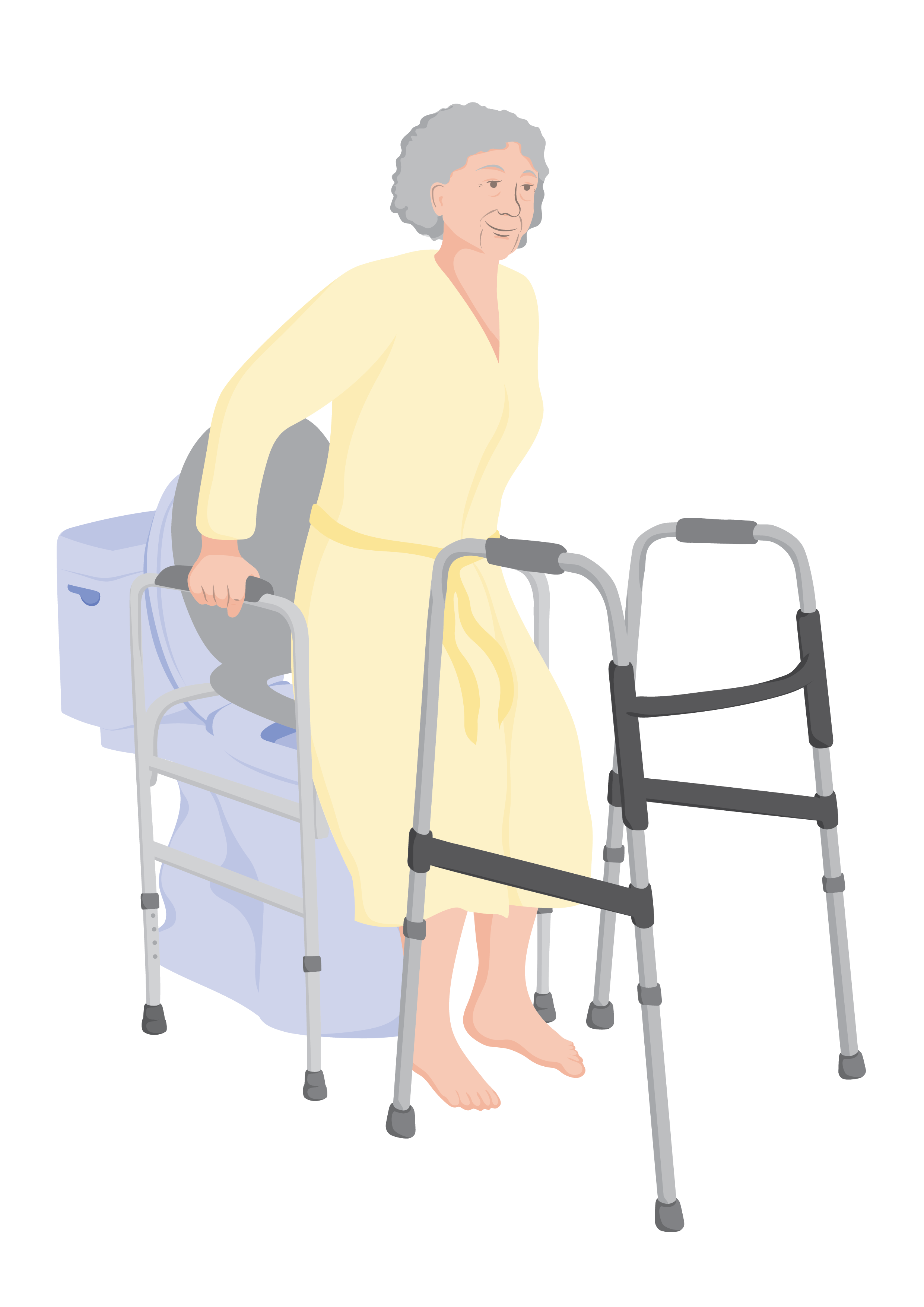Getting on and off a toilet or shower chair safely (transferring)
Getting on and off a toilet or shower chair is called transferring.
People can transfer in many different ways, depending on their ability, needs, and if they have assistance.
This topic provides some safety considerations and examples of different ways people transfer.
For more detailed information about transferring:
- See the TAP walking aid modules (for people who use a walking aid)
- Watch this video from the WHO Wheelchair Service Training Package – basic level (for people who use a wheelchair)
- Seek advice from rehabilitation personnel.

To transfer safely, always:
- Make sure brakes are locked before starting the transfer
- Make sure there is enough space for the person and their caregiver to move around safely
- Dry the floor if it is wet and use non-slip mats if the floor is slippery.
Assisting a person when standing up and sitting down
Encourage the person to do as much as they are able to themselves, including using the armrests when available.
You may also need to teach the person’s caregiver or family member how to assist a person safely at home.
If a person uses a toilet or shower chair with footrests and castor wheels with brakes, they will need help from a caregiver to move. The height of the footrests should be adjusted to support the person’s feet and thighs.
Teach the caregiver how to put the brakes on and off before transfers.

If a caregiver is helping a person to transfer, they should always bend their knees and ‘brace’ their body before lifting any of the person’s weight. This will help to prevent injury.
If a person has a weaker side, the caregivers should stand on that side to give assistance.

For more information on how to give transferring assistance refer to Walking aids Lesson 4.
Below are two examples of transfers.
Toilet chair by bed: sitting transfer

Meet Verna
Verna is 89 and lives with her husband Leif. Verna is frail and has difficulty getting to the toilet in time at night. Here you can see Verna transferring from her toilet chair to the bed. Leif is assisting.
Note that:
- Verna is using a transfer board to make it easier
- The toilet chair is positioned at an angle to the bed
- The toilet chair is the same height as the bed.
The armrest closest to the bed has been moved down to make it easier for Verna to slide across.
Transferring from a wheelchair to a toilet chair over a squat toilet
In narrow spaces, some people may be able to transfer with their wheelchair directly in front of the toilet or shower chair.
Activity


Ejaz is 24. She has a spinal cord injury. She transfers from her wheelchair to a toilet chair.
As there is not a lot of space in her toilet the right transfer method is important.
Look at the picture of Ejaz and identify the important features of the transfer.
How is the wheelchair positioned?
The wheelchair is positioned in front of the toilet chair and at a slight angle.
What features of the toilet chair help when transferring?
- Adjustable height legs: The toilet chair can be adjusted to be at the same height as Ejaz’s wheelchair.
- Arm rests lift up: This keeps them out of the way while Ejaz transfers. They can then be pulled down for her to use to balance as she adjusts her clothing.
- It is important for Ejaz to hold on to a stable object for support during the transfer. A grab bar can help.
Using a shower chair in a bath
Some wash areas have only a bath. Using a shower chair in a bath requires:
- The bath base to be wide enough for the shower chair
- The person to be able to safely step over the bath edge.
For a person who needs to use a shower chair in a bath, refer to a rehabilitation service for a home assessment and training on safe transfer methods.

Transfer using a hoist
If the person needs a lot of assistance to move, they may need a hoist to transfer. A hoist is a machine that lifts a person up using a sling.
Using a hoist safely requires training.
Anyone using a hoist should be trained before using it.
Usually a therapist or supplier will advise on how the hoist should be used.


